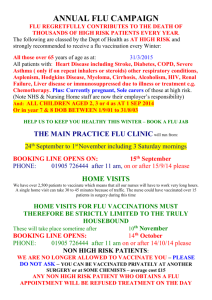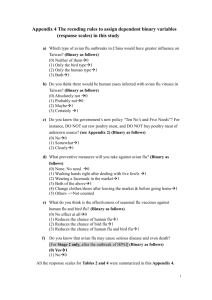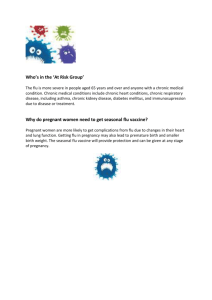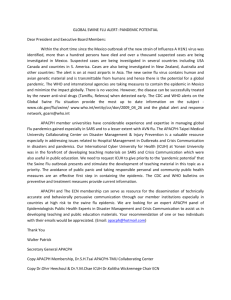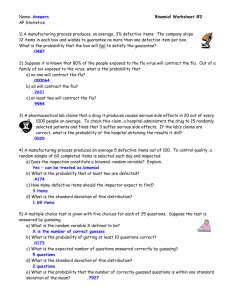Pandemic/Avian Influenza Talking Points (3/3/06)
advertisement
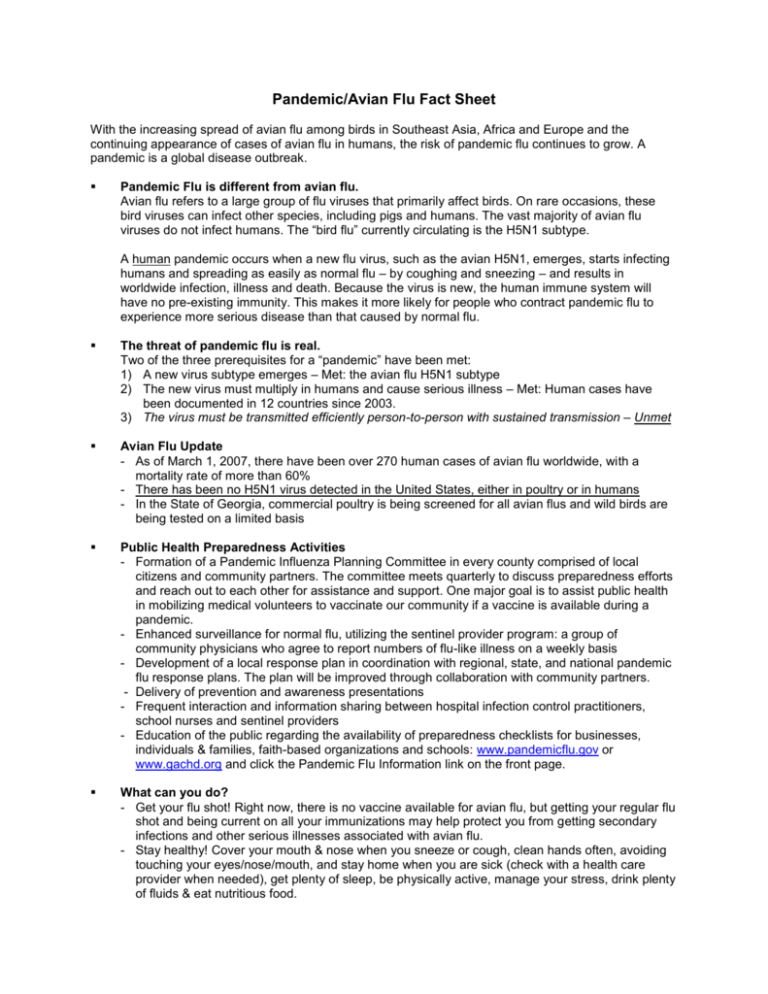
Pandemic/Avian Flu Fact Sheet With the increasing spread of avian flu among birds in Southeast Asia, Africa and Europe and the continuing appearance of cases of avian flu in humans, the risk of pandemic flu continues to grow. A pandemic is a global disease outbreak. Pandemic Flu is different from avian flu. Avian flu refers to a large group of flu viruses that primarily affect birds. On rare occasions, these bird viruses can infect other species, including pigs and humans. The vast majority of avian flu viruses do not infect humans. The “bird flu” currently circulating is the H5N1 subtype. A human pandemic occurs when a new flu virus, such as the avian H5N1, emerges, starts infecting humans and spreading as easily as normal flu – by coughing and sneezing – and results in worldwide infection, illness and death. Because the virus is new, the human immune system will have no pre-existing immunity. This makes it more likely for people who contract pandemic flu to experience more serious disease than that caused by normal flu. The threat of pandemic flu is real. Two of the three prerequisites for a “pandemic” have been met: 1) A new virus subtype emerges – Met: the avian flu H5N1 subtype 2) The new virus must multiply in humans and cause serious illness – Met: Human cases have been documented in 12 countries since 2003. 3) The virus must be transmitted efficiently person-to-person with sustained transmission – Unmet Avian Flu Update - As of March 1, 2007, there have been over 270 human cases of avian flu worldwide, with a mortality rate of more than 60% - There has been no H5N1 virus detected in the United States, either in poultry or in humans - In the State of Georgia, commercial poultry is being screened for all avian flus and wild birds are being tested on a limited basis Public Health Preparedness Activities - Formation of a Pandemic Influenza Planning Committee in every county comprised of local citizens and community partners. The committee meets quarterly to discuss preparedness efforts and reach out to each other for assistance and support. One major goal is to assist public health in mobilizing medical volunteers to vaccinate our community if a vaccine is available during a pandemic. - Enhanced surveillance for normal flu, utilizing the sentinel provider program: a group of community physicians who agree to report numbers of flu-like illness on a weekly basis - Development of a local response plan in coordination with regional, state, and national pandemic flu response plans. The plan will be improved through collaboration with community partners. - Delivery of prevention and awareness presentations - Frequent interaction and information sharing between hospital infection control practitioners, school nurses and sentinel providers - Education of the public regarding the availability of preparedness checklists for businesses, individuals & families, faith-based organizations and schools: www.pandemicflu.gov or www.gachd.org and click the Pandemic Flu Information link on the front page. What can you do? - Get your flu shot! Right now, there is no vaccine available for avian flu, but getting your regular flu shot and being current on all your immunizations may help protect you from getting secondary infections and other serious illnesses associated with avian flu. - Stay healthy! Cover your mouth & nose when you sneeze or cough, clean hands often, avoiding touching your eyes/nose/mouth, and stay home when you are sick (check with a health care provider when needed), get plenty of sleep, be physically active, manage your stress, drink plenty of fluids & eat nutritious food.

